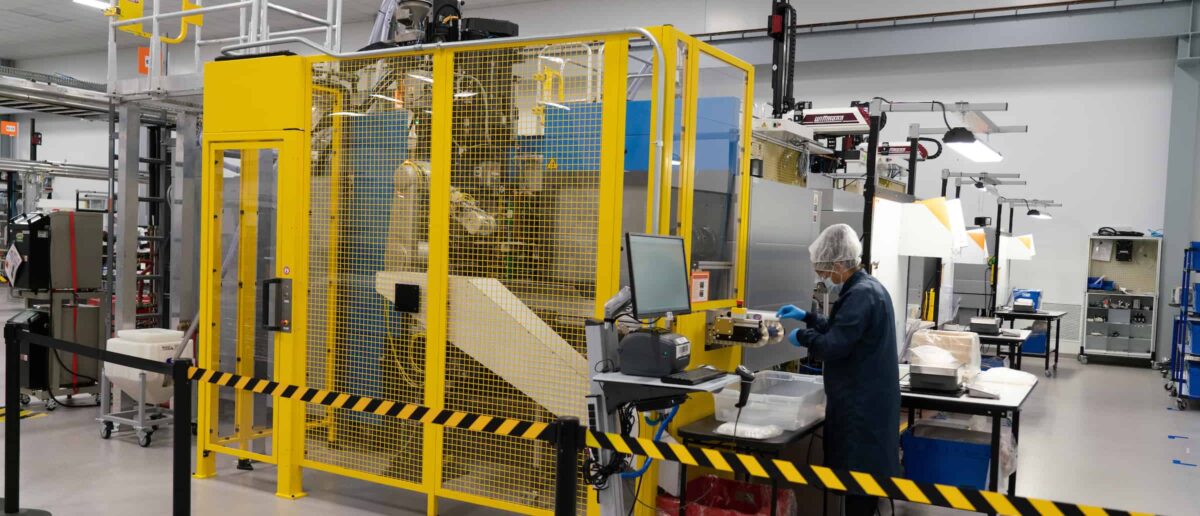Washington, D.C. The National Association of Manufacturers released a new study, Creating Cures, Saving Lives, which demonstrates the urgency of strengthening U.S. pharmaceutical manufacturing in the face of political threats to the sector’s global and innovative leadership.
Creating Cures, Saving Lives analyzes the sector’s contributions to the broader economy and its commitment to R&D that drives the development of life-saving treatments, such as therapeutic advances against cancer. The study further examines how federal price controls on the sector, such as those contained in the Inflation Reduction Act, could jeopardize these treatments. The study comes at a critical time, as the Centers for Medicare & Medicaid Services recently announced the first tranche of treatments that will be subject to price controls.
Pharmaceutical manufacturers contribute significantly to the U.S. economy, employing millions of Americans and driving innovation. Industry investments in R&D have led to life-saving treatments and therapies that have improved the quality of life for all Americans, said Chad Moutray, NAM chief economist. This study explores the negative implications of price control policies on pharmaceutical leadership, endangering American jobs and innovation in the healthcare system.
Creating Cures, Saving Lives includes seven key findings on the importance of the pharmaceutical and medical industry and the implications of price controls on the sector:
- The pharmaceutical industry is a major contributor to the U.S. economy and its impact continues to grow.
- The industry accounted for $355 billion in value-added production for the U.S. economy in 2021. The industry’s direct contribution of $192 billion is up 24% from just two years ago. The pharmaceutical sector was already an economically vital sector before the pandemic, and it has become increasingly important subsequently.
- The pharmaceutical industry fuels other sectors of the economy, supporting nearly 1.5 million U.S. jobs.
- The industry directly employs approximately 291,000 workers in the United States, an increase of nearly 9% over the past 24 months. One job in the pharmaceutical industry helps support 4.1 other jobs in the overall workforce.
- Industry employees are very productive.
- Industry employees produce $1.2 million per employee. This is almost six times more than the average output per employee of the American economy ($208,084).
- A successful pharmaceutical ecosystem requires strong investments from the private sector.
- The pharmaceutical industry reinvests 16.6% of its turnover in R&D. In fact, the American pharmaceutical industry invests nearly 3.5 times more in R&D as a percentage of its sales than the average American industry.
- The pharmaceutical industry pays high wages and benefits to American workers.
- The average annual labor income per worker in the pharmaceutical industry is more than $184,000. This figure is higher than some of the highest-paying industries in the country.
- The industry creates valuable STEM jobs.
- While approximately 6.6% of the U.S. workforce works in STEM occupations, approximately 25% of all pharmaceutical and drug manufacturing jobs are STEM-related. The pharmaceutical manufacturing sector employs more than four times the percentage of STEM workers employed in the overall workforce.
- Price control policies, like those of the IRA, could harm U.S. pharmaceutical leadership.
- Price controls can hinder progress in healthcare by reducing investment in R&D, which would negatively impact the country’s economic prosperity.
-NAM-
The National Association of Manufacturers is the largest manufacturing association in the United States, representing small and large manufacturers across all industry sectors and all 50 states. Manufacturing employs nearly 13 million men and women, contributes $2.91 trillion to the U.S. economy each year, and accounts for 55 percent of private sector research and development. NAM is the powerful voice of the manufacturing community and the leading advocate for a policy agenda that helps manufacturers compete in the global economy and create jobs in the United States. For more information about the NAM or to follow us on Twitter and Facebook, please visitwww.nam.org.
See more
#NAM #Study #Strength #U.S #Pharmaceutical #Manufacturing #Requires #Commitment #Innovative #Regulatory #Environment
Image Source : nam.org

